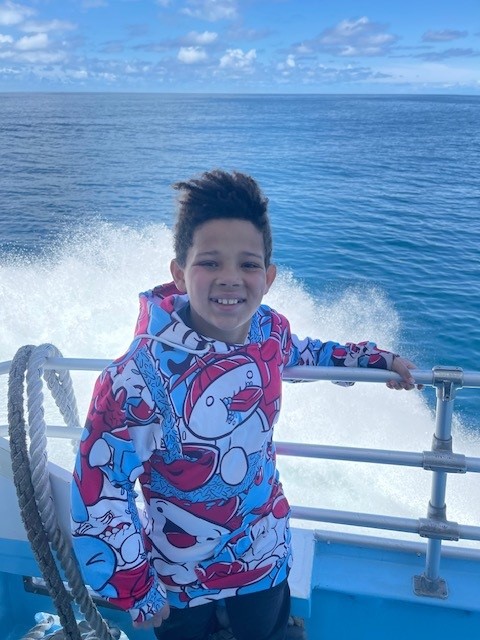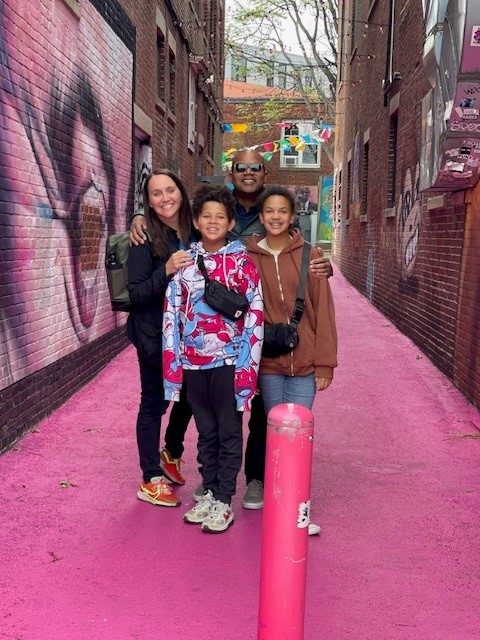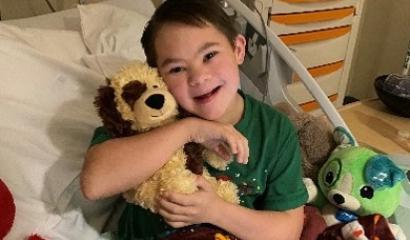Bright Futures
Articles and Updates from Phoenix Children's
In the spring of 2023, 11-year-old Brennan Anderson was in Phoenix for a soccer tournament when he started complaining of stomach pain. It was the Friday night before the tournament began, and Brennan’s family had met others at an Italian restaurant for dinner so the boys could “carb load.”
“We were expecting him to have a good appetite, but he didn’t feel like eating,” recalled Brennan’s dad, Tophas Anderson.
The next morning, Brennan still wasn’t feeling 100%, so he didn’t play in the first game. His parents, Tophas and Jane, hoped he’d feel better after lunch. Brennan was only able to eat a little, though. He said his stomach was still hurting him.
“At that point, we figured he had some kind of stomach bug,” Tophas said. “We gave him plenty of fluids and let him rest.”
On Sunday morning, Tophas and Jane hoped Brennan would feel up to playing, but he continued to complain of stomach pain and said he didn’t feel well enough.
At that point, Tophas and Jane decided to drive home to Prescott. They didn’t send Brennan to school on Monday and agreed that if he wasn’t feeling better by the end of the day, they’d take him to the doctor the following morning. Because Brennan’s energy and appetite levels still seemed low and he was complaining of stomach pain that evening, they scheduled the appointment.
At the doctor’s office, Brennan’s pediatrician performed a few tests, including one for COVID-19. She ultimately diagnosed Brennan with a stomach virus since, she said, a number of them were going around, and she prescribed him an anti-nausea medicine.
During the appointment, Tophas noticed Brennan’s voice sounded raspy, but he picked up the medicine and drove his son home.
As the day went on, though, Brennan’s voice grew raspier and he wasn’t making sense when he talked. Despite taking the medicine, Brennan also seemed confused and didn’t look life himself: His eyes appeared sullen and his complexion pale. Tophas called Jane and told her he thought there may be something more serious going on. When Jane came home from work that evening, she agreed, and they called 911.
An important discovery
When emergency responders arrived at Brennan’s house, they performed several tests, including one that checked his blood sugar levels. They learned Brennan’s levels were high and took him by ambulance to the nearby hospital.
In the emergency department, healthcare providers diagnosed Brennan with Type 1 diabetes. They told Tophas and Jane that their son would need to be flown by helicopter to Phoenix Children’s because he was experiencing diabetic ketoacidosis – a life-threatening complication of diabetes.
Diabetic ketoacidosis develops when the body doesn’t have enough insulin to allow blood sugar into the cells to be used for energy. Instead, the liver breaks down fat for energy, which produces acids called ketones. When the body produces too many ketones too quickly, they can be dangerous.
Symptoms of the condition include severe thirst, frequent urination, stomach pain and extreme fatigue. Sometimes, diabetic ketoacidosis is the first sign of diabetes in people who haven’t yet been diagnosed, like Brennan.
Learning to manage Type 1 diabetes
Brennan was in the intensive care unit at Phoenix Children’s for two days before his ketone and blood sugar levels lowered enough that he was no longer in danger.
“He started to have less confusion, he recognized us, and he was able to speak with us,” Tophas said. Brennan also asked his parents how he got to the hospital because he didn’t remember anything after the doctor’s appointment.
Once Brennan was cleared of diabetic ketoacidosis, the education began. He was moved to a different unit in the hospital and, shortly after, a dietitian, a physician assistant with the endocrinology team and several nurses visited to teach Brennan and his parents what they needed to know to successfully manage Type 1 diabetes.
“They did such a great job of providing us with materials, educating us and using charts,” Tophas said. “They taught us not only what diabetes was but how it would impact Brennan’s life and how we could help him live with it.”
Over the next few days, Tophas and Jane reviewed the materials and resources with Brennan and discussed them with the healthcare providers at Phoenix Children’s. Brennan also continued to improve. Four days after he’d arrived at the hospital, he was discharged.
Back to life
Since his diagnosis, Brennan has shown self-discipline and a commitment toward managing his condition, Tophas said. He received a continuous glucose monitor and an insulin pump to help him know his blood sugar levels and get the amount of insulin he needs when they rise higher than they should.
He’s also back to living life as he should. Brennan was able to go on a school field trip to Santa Catalina Island in Southern California and participate in another soccer tournament, which his team won. This fall, he’s playing golf and fencing.
“Being at a hospital geared toward children made the experience much better than it could have been,” Tophas said. “I also liked that they had different activities geared toward children, like video games. It helped Brennan forget what he was going through for a bit and just have a good time. Also, talking with professionals used to having the conversations they had with us made a big difference. They knew what our concerns would be, sometimes before we even raised them, and they were able to address them in a thorough and timely manner.”
November is National Diabetes Month
Around 37 million Americans are living with diabetes, according to the U.S. Census Bureau. Forms of diabetes include Type 1, Type 2 and gestational diabetes. Type 2 is the most common form of the disease. It develops over time and often is related to lifestyle factors, such as a sedentary lifestyle and obesity. Gestational diabetes refers to high blood sugar that develops during pregnancy.
Brennan’s form, Type 1 diabetes, is believed to be caused by an autoimmune reaction. It’s typically diagnosed early in life.
“I want people to know that Type 1 diabetes is an autoimmune disorder, and that there is plenty of information available to help a loved one manage their diagnosis,” Tophas said. “While there will be some adjustments that need to be made, the condition will not prevent your loved one from being able to do anything they want to do in life. That’s what we learned when we were at Phoenix Children’s, and it made a huge difference.”




